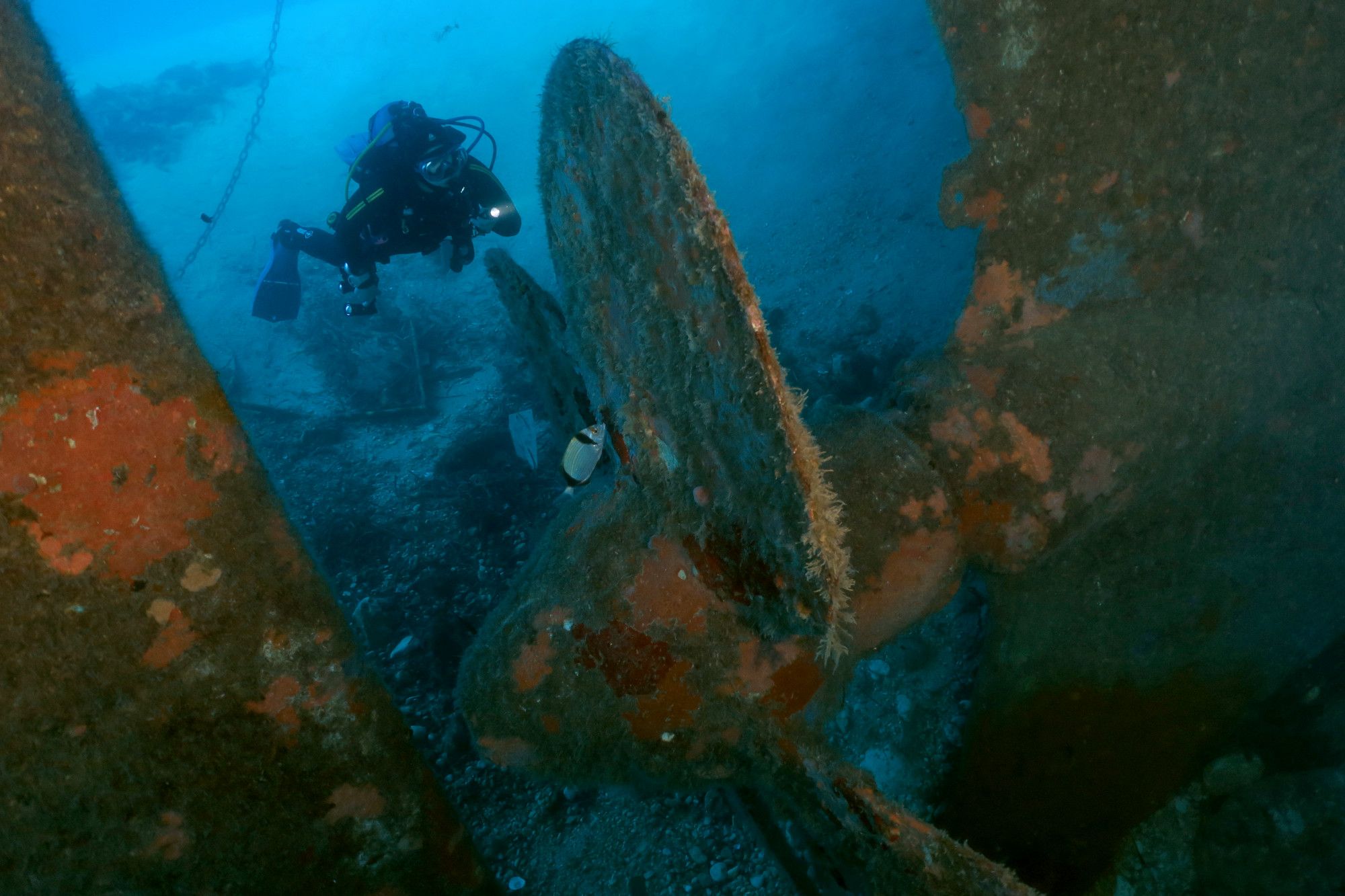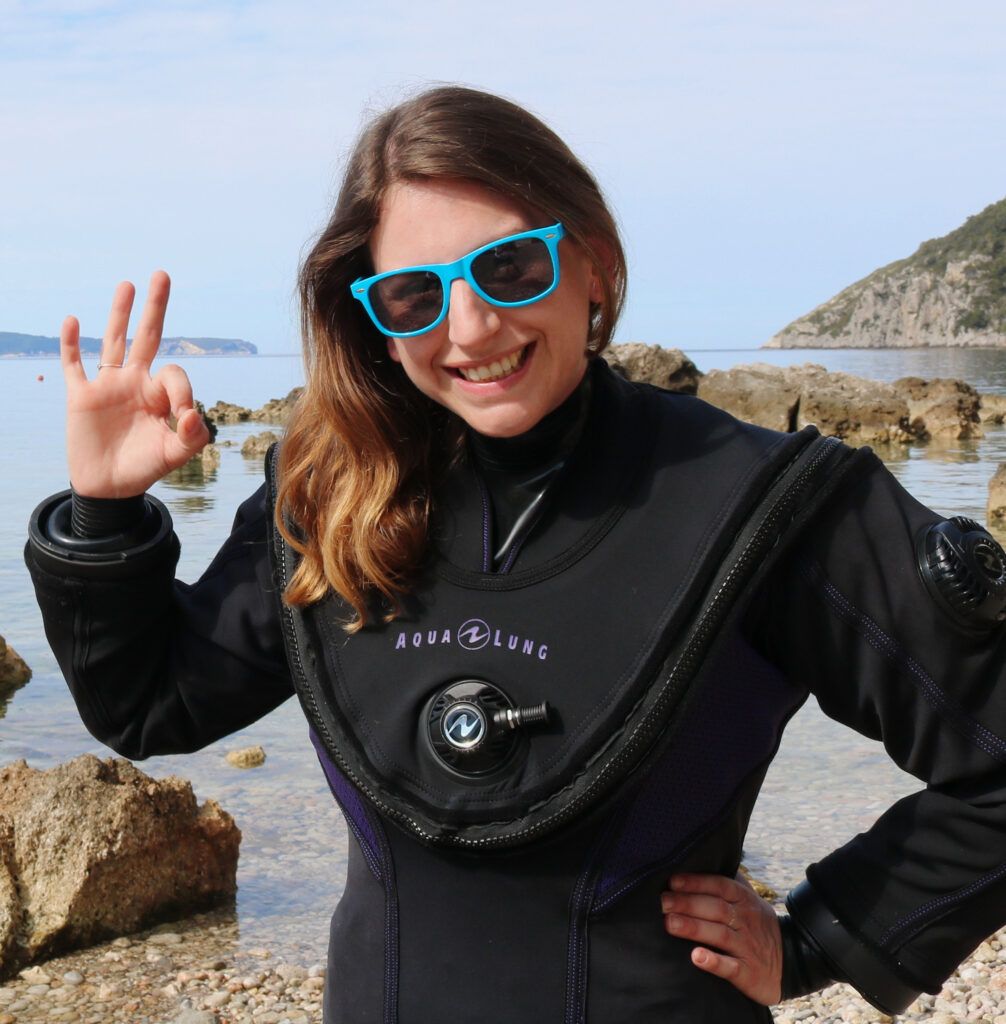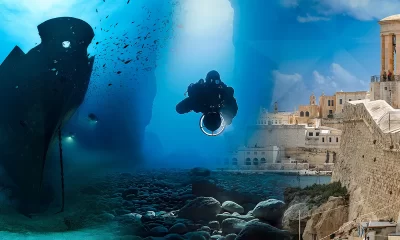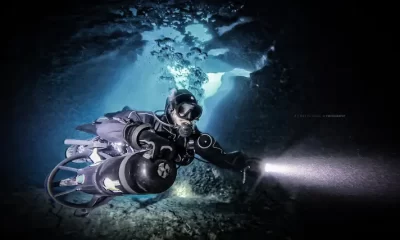Community
How the Smallest Country in the EU Became its Scuba Diving Capital
By Florine Quiron. Photos courtesy of the author unless noted.

“Where is it?” you may ask when hearing about it for the first time. Only 316 km²/122 mi2, Malta is a small archipelago in the southern Mediterranean Sea—so small that the pin locating it on international maps often hides it. But if you ask a European diver, chances are they will be more than likely to precisely locate it, and explain why it’s a fantastic underwater playground. So how did such a small country find itself at the centre of global divers’ attention? What makes it so special that the first-ever European edition of the Rebreather Forum, dubbed Rebreather Forum 4 (RF4), the globally acclaimed tech diving conference focused on rebreather diving, was held there last year?
A Story of Bravery and Wrecks
Malta, home to one of the world’s oldest megalithic structures, boasts a rich, singular history. Its strategic Mediterranean position made it a naval warfare hotspot for centuries. The Knights of St. John famously left their mark during the Great Siege of the 16th century, resisting the Ottoman invaders for four months. History repeated itself when WWII, the islands became a battleground between the British military forces, the German Luftwaffe, and Italian Regia Aeronautica. The relentless air attacks and submerged mines aimed to isolate and starve Malta into submission by sinking all supply ships. The resilience of the Maltese people during this two-year ordeal is legendary. Thus for scuba divers seeking a deeper historical context to their stay, visiting the National War Museum at Fort St. Elmo in Valletta is a must.

The waters around Malta are now a veritable underwater museum with a remarkable collection of historical ship and plane wrecks. Many are beyond recreational depths and require organising the dive through an approved operator—see the Professional Diving Schools Association (PDSA) of Malta listing. The few exceptions include the HMS Maori (16 m/52 ft max depth) beneath the fortified walls of Valletta—a British destroyer sunk in 1942—and the Blenheim Bomber (42 m/138 ft max depth, which can be done while respecting the limit of 40 m/131 ft)—a British bomber aircraft that crashed in 1941—off area in the South East of Malta, called Marsaxlokk. “Many of the delegates at last year’s Rebreather Forum took the opportunity to explore some of Malta’s deep historical wrecks. They were blown away,” reported RF4 organiser Michael Menduno.
Indeed, Heritage Malta, the governmental organisation in charge of historical sites in the Maltese Islands, including those underwater, offered the attendees a glimpse of what the deepest wrecks look like thanks to virtual reality (VR) headsets and footage prepared by the Underwater Cultural Heritage Unit (UCHU) within Heritage Malta. The virtual dives on the B-24 Liberator plane wreck at 55 m/180 ft deep and the HMS Urge submarine at 115 m/377 ft deep enticed more than one diver to explore the islands after the conference.

A Clear Vision Since the 1970s
Malta’s emergence as a diving hotspot is no accident. The Malta Tourism Authority has long recognised the potential of its underwater treasures and has implemented a strategic approach to developing diving tourism. Since the 1970s, Malta had begun investing heavily in its tourism infrastructure and had already placed a focus on diving. The first dive centres began operating in the 1970’s when most countries, even in Western Europe, had none.
By the 1990s, the intentional scuttling of vessels in much shallower depths than where their historical counterparts lie, had significantly enhanced Malta’s position and appeal to divers. It all started with the Rozi wreck in Cirkewwa that was purposely sunk back in 1992, with the most recent scuttling having taken place in 2022 with the MV Hephaestus. One of the better known of these artificial reefs, is the Libyan tanker MV UM El Faroud, which was scuttled in 1998 in Zurrieq. The ship had suffered a a dramatic explosion while in the Dockyard in Malta, in 1995.
Today, there are 13 of these artificial reefs around the Maltese coastline in addition to the historic shipwrecks and it doesn’t look like Malta will stop there in adding value or variety for dive tourism.

“Malta understood diving as a tourism-related activity from very early on,”
explained Asutay Akbayir, PADI Regional Manager for North Africa, Lebanon, and Israel and the Administrative Representative for Türkiye, who is based in Malta. “Unlike most countries, diving in Malta falls under the Ministry of Tourism and Public Cleanliness, not Sports.” In fact, most of the infrastructure improvements designed to increase diver experience, comfort (parking areas, stairs, and toilets, for instance) are supported by the Malta Tourism Authority in coordination with the Professional Diving Schools Association (PDSA).
“The diving business is so vital to Malta that during the COVID pandemic, the government actually issued vouchers of 100€ for divers to spend at local dive centres; they also paid for the wages of the dive centre staff during the lockdowns. In Malta, diving is considered a serious business,” added Akbayir.
Over four decades, Malta has built a robust support system for divers, with numerous dive shops, schools, and facilities offering everything from beginner courses to advanced technical diving training. The island’s tourism strategy has also included hosting international diving events—such as Rebreather Forum 4 and the Under The Mediterranean II conference held in 2022—further elevating its status within the global diving community.

Short Distances & Winds
Malta’s compact size is another factor that enhances its appeal to scuba divers with minimal travel time and logistics. This means that no dive site is ever too far away, no matter where you stay or which dive centre you use. This accessibility allows divers to maximise their underwater time, often fitting in multiple dives in different corners of the archipelago within a single day. Note that with a maximum altitude of 253 m/830 ft, you don’t have any decompression restrictions when driving cross-country like you might have in some volcanic islands, for instance.
Each day, scuba divers meet in the morning at the dive centre; after preparing their equipment and briefing, they can go to Zurrieq, Cirkewwa, Marsaxlokk, or even to the sister island of Gozo. Scuba diving might be one of the best activities for exploring the country, even if you’re there for a short holiday. In a day, you can dive, explore ancient historical sites, relax at the beach, dine at one of the many delectable local restaurants and then go party in the city, or simply experience one of the many cultural events that take place throughout the year.
Malta’s prevailing North Westerly wind and mild weather conditions generally allow for diving year-round. Water temperatures never go below 15 °C/59 °F from January to March and stay well above 20 °C/68 °F between June and November. While April tends to be occasionally windier, preventing diving at some sites, there are always sheltered alternatives on the opposite side of Malta and Gozo.
This flexibility combined with the short travelling distances from one place to another, ensures that diving plans are rarely disrupted. Therefore, visitors can enjoy the island’s underwater offerings regardless of the season and with dive centres in Malta and Gozo starting to extend their operations into the winter months, this makes travel plans to this Mediterranean gem much easier.

Shore Diving at Its Finest
Unlike many other top diving destinations that require lengthy boat trips to reach prime sites, many of Malta’s best dive spots are immediately accessible from the shore. This convenience reduces overall costs and makes diving more spontaneous and flexible.
Notable shore diving sites include Zurrieq (UM El Faroud), Cirkewwa (Rozi & P29), and Xatt-l-Ahmar (MV Karwela, MV Cominoland, MV Xlendi, MT Hephaestus). However, not all shore dives are wreck dives, and divers also have a wide choice of caverns, arches, and tunnels to explore. The most famous in that category would be the Blue Hole in Gozo. These sites offer the same excitement and beauty as boat dives but with direct access from the shore.
The abundance of shore diving options also means that divers can be more relaxed and avoid the time constraints often associated with boat diving. The Maltese islands make the destination an ideal setting for beginner to advanced training, with plenty of sites to put in the hours at each diver’s pace. “Shore diving is so good in Malta that of the 70 dive centres across the Maltese Islands, only four have their own dive boat and three have RIBS,” explained Akbayir.
If it wasn’t enough, the views from many dive sites are breathtaking. Zurrieq (UM El Faroud) and Djewera (Blue Hole) are excellent examples. The surrounding cliffs are among the most stunning natural sites of the country. Even non-divers flock to these places to see from the land or on a boat tour the Blue Grotto or the Blue Hole.

A Dive for Everyone
For beginners, there are vessels to visit in the shallows, such as the P31 in Comino (21m / 68 feet), the SS Maori in Marsamxett (15m / 49ft) or the Carolita on Manoel Island (8m – 23m / 26ft – 75ft). All are perfect dives to learn and practice skills in total safety in addition to having the easiest shore access to the water in the Maltese Islands.
Finally, it goes without saying that Malta has many more challenging sites for the most experienced divers. The Double Arch in Gozo, with its two underwater arches on top of each other, is a favourite with advanced divers but it does require quite a surface swim and top-notch underwater navigation. Technical divers are usually drawn to the deeper wrecks, which fall under UCHU managment, such as the SS Polynesien, an ocean liner that sank at the end of WWI at 65 m/213 ft deep. “It’s a paradise for tech divers,” emphasised Akbayir. “Many dive centres are able to support tech and rebreather divers with sophisticated gas mixing stations and dedicated spaces for tech divers to prep their gear.” Visiting these underwater heritage wrecks is only possible through prior registration via a registered Heritage Malta dive centre, and to get you into the mood, you can preview these protected sites via The Virtual Museum.
DIVE DEEPER
InDEPTH: Second Edition of “Diving Gozo & Comino” by Richard Salter
Other stories by Florine Quirion:
InDEPTH:The Love-Hate Relationship Between CCR & CE Marking (2023)
InDEPTH: Listen Up: Freediving is About to Enter a New Era if Oxama has a Say! (2022)
InDEPTH: Size, err Depth, Matters: Why Do Pools Keep Breaking Records? (2021)
For more destination information see: Visit Malta
Click here to go back to Malta Mania

Florine Quirion is a writer, underwater photographer, and dive travel blogger at World Adventure Divers. She has visited Malta three times and spent two months last year exploring it in deeper detail while indulging in pastizzi.






















































